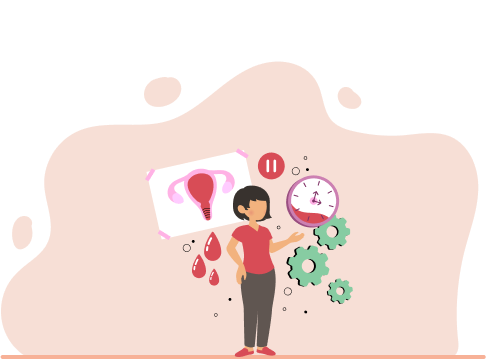Do You Know About Your Menstrual Cycle?

What is the Menstrual Cycle?
The menstrual cycle is a series of changes a woman’s body goes through to prepare for the possibility of pregnancy. It typically lasts about 28 days but can range from 21 to 35 days in adults and 21 to 45 days in young teens. The cycle is counted from the first day of one period to the first day of the next.
Phases of the Menstrual Cycle
The menstrual cycle is divided into four main phases:
1. Menstrual Phase
This phase starts on the first day of your period and lasts about 3 to 7 days. During this time, the uterus sheds its lining, resulting in menstrual bleeding. Symptoms can include cramps, bloating, and mood swings.
2. Follicular Phase
The follicular phase overlaps with the menstrual phase and continues after your period ends. It starts on the first day of your period and ends with ovulation. The pituitary gland releases follicle-stimulating hormone (FSH), stimulating the ovaries to produce follicles, each containing an egg. This phase lasts about 13 to 14 days.
3. Ovulation Phase
Ovulation usually occurs around the middle of the cycle, about 14 days before the start of your next period. The luteinizing hormone (LH) surge triggers the release of a mature egg from one of the ovaries. The egg travels down the fallopian tube, where it can be fertilized by sperm. This phase lasts about 24 hours.
4. Luteal Phase
The luteal phase lasts about 14 days, starting after ovulation and ending with the first day of your period. The empty follicle transforms into the corpus luteum, which releases progesterone to thicken the uterine lining for a potential pregnancy. If the egg is not fertilized, the corpus luteum breaks down, leading to a decrease in progesterone and the start of menstruation.
Common Menstrual Symptoms
Many women experience symptoms throughout their menstrual cycle. These can include:
- Menstrual cramps: Pain in the lower abdomen caused by uterine contractions.
- Bloating: Water retention leading to a feeling of fullness.
- Mood swings: Hormonal changes affecting emotions and mood.
- Breast tenderness: Hormonal fluctuations causing breast discomfort.
- Fatigue: Decreased energy levels and tiredness.
Tracking Your Menstrual Cycle
Keeping track of your menstrual cycle can help you understand your body’s patterns and identify any irregularities. You can use a calendar, diary, or menstrual cycle tracking app to record the start and end dates of your period, symptoms, and any changes.
Why Understanding Your Menstrual Cycle Matters
- Reproductive Health: Knowing your cycle helps in planning or preventing pregnancy.
- Detecting Irregularities: Irregular periods or changes in your cycle can indicate health issues that may need medical attention.
- Managing Symptoms: Understanding your cycle can help you anticipate and manage symptoms, improving your overall well-being.
- Medical Appointments: Providing accurate cycle information can assist healthcare providers in diagnosing and treating conditions.
When to See a Doctor
If you experience significant changes in your menstrual cycle, such as heavy bleeding, severe pain, or missed periods, it is important to consult a healthcare provider. These symptoms can indicate underlying health issues that may require treatment.
Being informed about your menstrual cycle is empowering and essential for maintaining your health. By understanding the phases, symptoms, and how to track your cycle, you can take proactive steps in managing your reproductive health and overall well-being. If you have any concerns or notice irregularities, don’t hesitate to seek medical advice.
Related Videos







